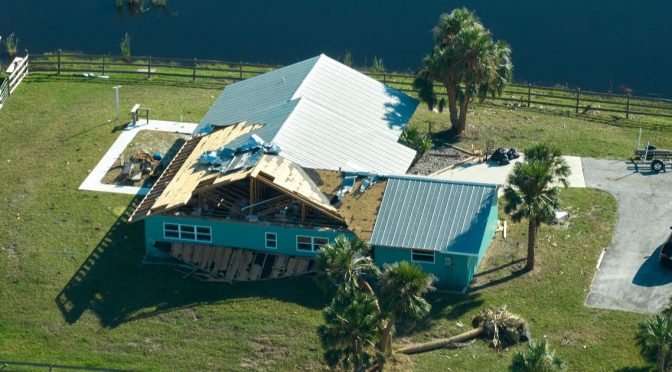Wind Mitigation: Protecting Miami Homes from Hurricanes
Wind mitigation in Miami is one of the best ways to protect your home from hurricanes. With the right upgrades, you can reduce storm damage and even lower your insurance premiums. Florida’s building codes encourage homeowners to make these improvements, and insurance companies reward them with credits.
We’ll explain the most important wind mitigation features: roof-to-wall attachments, window and door coverings, structural bracing, and secondary water barriers. We’ll also cover how mitigation credits can save you money each year.
Why Wind Mitigation Matters in Miami
Miami faces some of the strongest storms in the country. Hurricane-force winds can rip roofs off homes, shatter windows, and cause major flooding inside. A single storm can cost a family thousands of dollars in repairs.
Wind mitigation focuses on strengthening weak points in your home. By reinforcing the roof, walls, windows, and doors, you reduce the chance of damage. These upgrades not only protect your property but also make recovery after a storm faster and less costly.
Insurance companies recognize the value of these improvements. If your home includes approved wind mitigation features, you can qualify for credits that reduce your annual premiums.
Roof-to-Wall Attachments: Securing the Structure
The roof faces the most danger during a hurricane. Strong winds can tear it off the walls if it isn’t tightly secured. Roof-to-wall attachments fix this problem by holding the roof in place.
What Are Roof-to-Wall Attachments?
Roof-to-wall attachments are metal connectors that tie the roof trusses or rafters directly to the wall. These connectors, often called clips or straps, keep the roof anchored during extreme winds.
Why They Matter in Hurricanes
Without proper attachments, uplift pressure from hurricane winds can pry the roof away, leaving the rest of the house exposed. By using reinforced clips or straps, your roof stays connected to the structure. This single upgrade can greatly reduce storm damage.
Types of Attachments
- Clips: Small metal connectors that secure the roof trusses to the walls.
- Single Straps: Longer metal straps that wrap over the truss and nail into both sides of the wall.
- Double Straps: Stronger straps that fasten on both sides, offering the most resistance to uplift.
Insurance inspectors often check the type of your home during a wind mitigation inspection. Stronger connections usually mean better credit.
Window and Door Coverings: The First Line of Defense
Windows and doors are entry points for wind and debris. Once a window breaks, the pressure inside the house can blow off the roof or walls. Protecting openings is one of the most important steps in wind mitigation.
Hurricane Shutters
Shutters cover windows and doors when a storm is coming. They block flying debris and keep glass from breaking. Common options include:
- Accordion Shutters: Fold open and closed like an accordion, attached to the sides of windows.
- Roll-Down Shutters: Stored in a housing box above the window and pulled down when needed.
- Panel Shutters: Removable panels made of metal or polycarbonate, installed before a storm.
Impact-Resistant Glass
Another option is to replace standard windows with impact-resistant glass. These windows have a special layer that holds the glass together even if cracked. They provide constant protection without needing to install shutters each time.
Reinforced Doors and Garage Doors
Doors, especially garage doors, create weak spots in a home. Hurricane-rated doors use stronger frames and hinges to keep them secure. Garage doors may include bracing kits or reinforced panels that prevent them from buckling under wind pressure.
Structural Bracing: Strengthening the Frame
While roof attachments and shutters protect from specific threats, the overall frame of the home also needs attention. Structural bracing provides extra support to walls, gables, and trusses.
Gable End Bracing
A lot of houses in Miami have gable roofs, which are especially vulnerable to wind. Gable ends can collapse under high pressure. Bracing adds horizontal and diagonal supports that strengthen the gable.
Roof Deck Reinforcement
The roof deck, the plywood or sheathing under the shingles, needs to stay attached to the trusses. Special adhesives, nails, or screws can reinforce the deck. Roof-to-wall attachments help prevent sections of the roof from peeling away during strong winds.
Wall Bracing
In some cases, homes benefit from additional bracing in the walls. Installing anchor bolts or reinforcing the connections between walls and foundations helps strengthen the structure. These improvements increase stability when winds push against the structure.
Stopping Hidden Leaks
Even if your roof covering is damaged, a secondary water barrier can stop leaks from spreading inside. This barrier is usually a peel-and-stick membrane applied under the roof covering.
How It Works
When shingles or tiles blow off, rain can pour into the attic. A secondary water barrier seals the seams of the roof deck, preventing water from reaching the interior.
Types of Barriers
- Self-Adhering Membranes: Rolled sheets that stick directly to the roof deck.
- Foam Adhesives: Sprayed into gaps between roof panels to seal joints.
These barriers add an extra layer of protection that can save homeowners from costly water damage.
Wind Mitigation Protects Miami Homes
Wind mitigation is more than just a checklist; it’s a smart way to protect your home and your wallet. By strengthening roof-to-wall attachments, securing windows and doors, adding structural bracing, and installing secondary water barriers, you reduce hurricane risks.
At the same time, you gain valuable insurance credits that lower yearly costs. A simple inspection can show where your home stands today and what improvements bring the most value.
Protecting homes from hurricanes starts with preparation. Wind mitigation gives homeowners confidence that when the next storm comes, their house will be ready.






